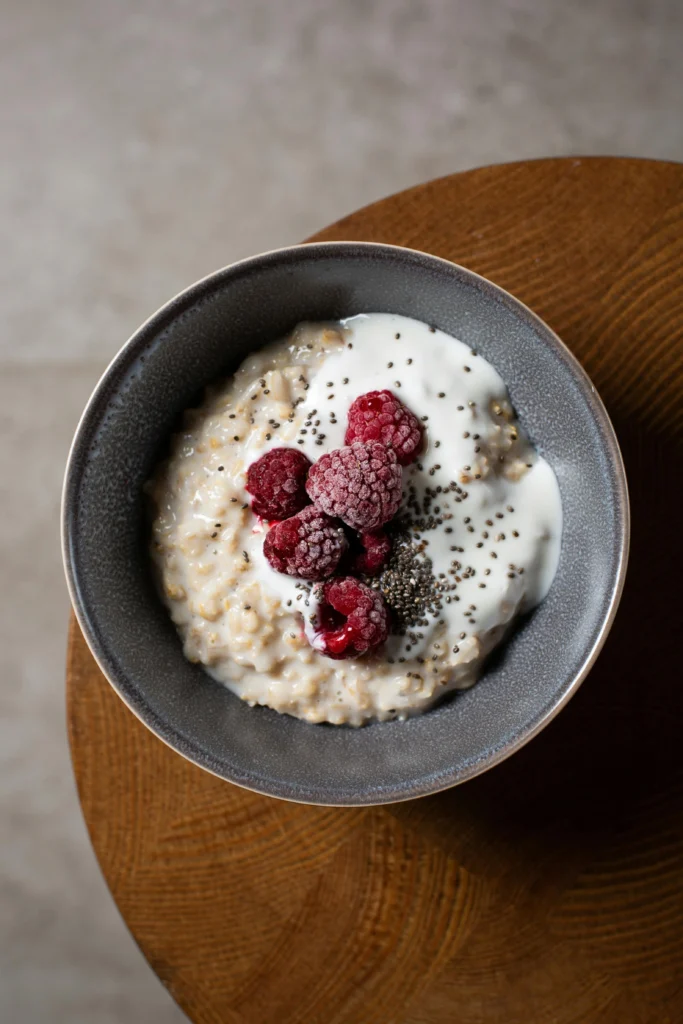50 Soft Foods to Eat After Tooth Extraction :A tooth extraction is a common dental procedure, and the care you take afterward is just as crucial as the procedure itself. Choosing the right food to eat after extraction tooth is vital not only for healing but also for managing pain and discomfort. This comprehensive guide is designed for anyone wondering what constitutes the best food to eat after extraction of tooth. We will provide an extensive list of soft foods after tooth extraction to make your recovery journey as comfortable and speedy as possible.
Table of Contents
Extraction Care and Dietary Guidelines
The first 24 to 48 hours after an extraction are critical. During this time, your focus should be on soft foods to eat after tooth extraction that are not only gentle but also nutrient-dense. The goal is to minimize any pressure or irritation on the extraction site.
- Cool and Soft Foods: Cool foods can help reduce swelling in the first few hours.
- Avoid Chewing: Steer clear of any foods to eat after tooth extraction that require significant chewing.
- Beverages: Strictly avoid using a straw. The suction can dislodge the blood clot that forms in the socket, leading to a painful condition called dry socket.
The Comprehensive List: 50 Soft Foods to Eat After Extraction

Here is a complete list of soft foods to eat after extraction, categorized to guide you through the different stages of your recovery. Each entry includes helpful information and preparation tips.
Stage 1: The First 24 Hours (Liquid and Semi-Liquid Foods)
This phase requires the gentlest options that require no chewing.
- Soups (Tomato, Chicken Broth, Vegetable):
- Why it’s good: Soups provide essential hydration and electrolytes. Chicken broth contains collagen, which aids tissue repair.
- How to prepare: Consume lukewarm or at room temperature. Blend thoroughly until completely smooth and lump-free.
- Yogurt:
- Why it’s good: The probiotics in yogurt support digestive health, especially if you’re on antibiotics. It’s also a good source of protein and calcium.
- How to prepare: Choose plain, non-chunky yogurt. Eating it cool can be soothing.

- Porridge:
- Why it’s good: Porridge is rich in fiber, which can help prevent constipation—a common side effect of pain medication.
- How to prepare: Cook it with extra water or milk to make it soft and runny. Mash in a banana or add a little honey for flavor.
- Pudding:
- Why it’s good: Pudding is a smooth, energy-dense option that can help curb hunger.
- How to prepare: Make it at home with milk, cornstarch, and sugar. Always serve it chilled.
- Ice Cream:
- Why it’s good: The coolness of ice cream can help reduce swelling and provide a soothing, mild numbing effect.
- How to prepare: Opt for smooth varieties like vanilla or chocolate. Avoid flavors with chunks, nuts, or chips.
- Milkshakes:
- Why it’s good: Milkshakes are an excellent source of calories, calcium, and protein, which are crucial for recovery.
- How to prepare: Blend milk, a soft banana, and a scoop of ice cream. Crucially, drink it directly from a cup without a straw.
- Fruit Juices (Apple, Orange):
- Why it’s good: These juices are packed with vitamins to support your immune system.
- How to prepare: Always strain the juice to remove any pulp or seeds. Dilute acidic juices like orange with water.
- Turmeric Milk (Golden Milk):
- Why it’s good: The curcumin in turmeric is a powerful anti-inflammatory compound that can help reduce pain and swelling.
- How to prepare: Warm a glass of milk with half a teaspoon of turmeric powder and honey. Drink it once it has cooled.
- Applesauce:
- Why it’s good: Apples are a great source of fiber and vitamins. Cooking and pureeing them makes them easy to digest.
- How to prepare: Peel, core, and cook apples until soft. Mash or blend them into a puree. A dash of cinnamon can enhance the flavor.
- Jell-O:
- Why it’s good: Gelatin, the main ingredient in Jell-O, is a protein that is believed to aid the wound-healing process.
- How to prepare: Prepare it from a packet or make it from scratch. Serve at room temperature or chilled.
Stage 2: Days 2-3 (Thicker, More Nutritious Foods)
As the pain and swelling subside, you can introduce more substantial food after tooth extraction.
- Cream of Mushroom Soup:
- Why it’s good: Mushrooms provide selenium and Vitamin D, which are essential for immune function.
- How to prepare: Cook mushrooms with onions and blend until perfectly smooth. Add cream for a richer consistency.
- Lentil Soup (Red Lentils):
- Why it’s good: Lentils are an excellent source of plant-based protein and fiber, providing energy and a feeling of fullness.
- How to prepare: Cook lentils until very soft and then blend them. Use mild spices.
- Mashed Potatoes:
- Why it’s good: Potatoes are rich in Vitamin C and Potassium and are very easy to digest.
- How to prepare: Boil or bake potatoes, then peel and mash them thoroughly with milk, butter, and salt until no lumps remain.
- Scrambled Eggs:
- Why it’s good: Eggs are a perfect protein source and contain Vitamin D and B12, which are vital for tissue repair.
- How to prepare: Cook on low heat with butter until soft and creamy. Avoid pepper or spicy seasonings.
- Tofu (Silken or Soft):
- Why it’s good: Tofu is a fantastic plant-based protein source that is soft and rich in minerals.
- How to prepare: Add it to soups or eat it plain with a little salt.
- Bananas:
- Why it’s good: Bananas are an excellent source of Potassium and are naturally soft and easy to eat, making them a perfect food to eat after teeth extractions.
- How to prepare: Eat with a spoon or mash into yogurt or porridge.
- Avocado:
- Why it’s good: Avocados are packed with healthy fats, Vitamin K, and Folate, providing a great energy boost.
- How to prepare: Scoop out the flesh, add a pinch of salt, and eat with a spoon or mash it into a dip.
- Soft Cheeses (Cottage Cheese, Ricotta):
- Why it’s good: These cheeses are high in protein and calcium, which are excellent for bone and tooth health.
- How to prepare: Eat by the spoonful or mix with a little honey for a sweet treat.
- Semolina Pudding (Suji Ka Halwa):
- Why it’s good: This pudding is rich in carbohydrates and provides quick energy when you may be feeling weak.
- How to prepare: Roast semolina in ghee, then add milk and sugar to cook into a soft, thick pudding. Prepare without nuts.
- Custard:
- Why it’s good: Made from milk and egg yolks, custard is a good source of protein and calcium.
- How to prepare: Make at home or use a mix. Always serve it cold.
- Blended Pasta:
- Why it’s good: Pasta is a great source of carbohydrates for energy.
- How to prepare: Overcook the pasta until very soft, then blend it into a puree. You can mix in cheese or a smooth tomato sauce.
- Yogurt Smoothies:
- Why it’s good: Smoothies are a powerhouse of vitamins, minerals, and fiber.
- How to prepare: Blend yogurt with spinach, banana, and other soft fruits like mango.
- Cream of Spinach Soup:
- Why it’s good: Spinach is loaded with Iron, Vitamin A, and Vitamin C, great for blood and immunity.
- How to prepare: Cook spinach and onions, then blend into a smooth soup. Season with salt and pepper.
- Mashed Baked Beans:
- Why it’s good: Beans are a fantastic plant-based source of protein and fiber.
- How to prepare: Use canned baked beans, mash them, and mix with yogurt or mayonnaise to create a soft dip.
- Salted Lassi (Buttermilk):
- Why it’s good: Lassi is rich in probiotics and helps keep the body hydrated.
- How to prepare: Blend yogurt with water, salt, and cumin. Drink it fresh and cool.
- Cream of Pumpkin Soup:
- Why it’s good: Pumpkin is rich in Vitamin A and is very easy to digest.
- How to prepare: Boil or roast pumpkin and then blend it. A little ginger powder can enhance the flavor.
- Moong Dal Khichdi:
- Why it’s good: Moong dal is considered light and easy to digest, providing protein and fiber.
- How to prepare: Cook rice and lentils together with extra water to make a soft, porridge-like consistency.
- Rice Pudding (Firni):
- Why it’s good: This pudding, made from ground rice and milk, is a light and energy-giving food.
- How to prepare: Cook rice flour in milk with sugar until it thickens.
- Seedless Fruit Smoothies:
- Why it’s good: Use fruits like banana, mango pulp (without fibers). They provide natural sweetness and nutrition.
- How to prepare: Blend all ingredients into a thick smoothie. Add milk or yogurt for consistency.
- Blended Chicken:
- Why it’s good: Chicken is a top source of lean protein, essential for muscle and tissue repair.
- How to prepare: Cook chicken pieces with mild ginger and garlic, then blend into a homogeneous puree.
- Steamed or Poached Fish Fillets:
- Why it’s good: Fish contains Omega-3 fatty acids, which are anti-inflammatory and can aid the healing process.
- How to prepare: Steam or poach fish fillets until they are soft and flaky, easily eaten with a spoon.
- Oatmeal:
- Why it’s good: Oatmeal is full of fiber, magnesium, and zinc.
- How to prepare: Cook instant oatmeal with extra water or milk to make it soft. Mash in a banana.
- Cream of Carrot Soup:
- Why it’s good: Carrots are a powerhouse of Beta-Carotene (Vitamin A), which is important for tissue repair.
- How to prepare: Boil carrots until soft and then blend. A little ginger juice can be added for flavor.
- Rice Milk:
- Why it’s good: This is a light, lactose-free alternative to milk.
- How to prepare: Buy it from the market or make it at home by blending cooked rice with water.
- Mashed Sweet Potato:
- Why it’s good: Sweet potatoes are rich in Vitamin A, Vitamin C, and Manganese.
- How to prepare: Bake or boil sweet potatoes, then mash them with a little butter and cinnamon.
- Cream of Wheat/Farina:
- Why it’s good: This is a finer grain than oatmeal, making it even easier to eat and digest.
- How to prepare: Cook the cereal with milk or water to a soft, porridge-like consistency.
- Cornmeal Halwa:
- Why it’s good: This halwa is light and energy-dense.
- How to prepare: Roast cornmeal in ghee, then add milk and sugar to make a thick pudding.
- Very Soft Omelet:
- Why it’s good: Egg yolks are rich in Iron and Vitamin D.
- How to prepare: Cook the eggs on low heat with a lid to create a soft, fluffy texture. Eat with little or no seasoning.
- Lentil Water (Dal Ka Pani):
- Why it’s good: This is a light, easy-to-digest, and protein-rich broth.
- How to prepare: Cook lentils in plenty of water, then strain and drink only the water.
- Mashed Cauliflower and Potatoes:
- Why it’s good: Cauliflower provides Vitamin K and Vitamin C.
- How to prepare: Boil cauliflower and potatoes until tender, then blend with mild spices into a soup or puree.
- Banana Shake:
- Why it’s good: A banana shake is a perfect combination of potassium and carbohydrates.
- How to prepare: Blend a ripe banana with milk and a scoop of ice cream.
- Almond Milk:
- Why it’s good: Almond milk is rich in Vitamin E and is often fortified with Calcium.
- How to prepare: Purchase unsweetened almond milk from the store and drink it directly.
- Rice Halwa:
- Why it’s good: This halwa is soft and comforting.
- How to prepare: Cook rice until soft, mash it, and then cook with milk and sugar to make a halwa.
- Tapioca Pudding (Sago Kheer):
- Why it’s good: Tapioca pearls are rich in carbohydrates and easy to digest.
- How to prepare: Cook sago pearls in milk until transparent and soft, sweetened with sugar.
- Boiled and Mashed Chickpeas:
- Why it’s good: Chickpeas are a treasure trove of protein and fiber.
- How to prepare: Soak chickpeas overnight and boil until very soft. Mash them lightly and eat with a little salt.
- Cream of Wheat:
- Why it’s good: This wheat-based hot cereal is often fortified with folate and iron.
- How to prepare: Prepare according to packet instructions with milk or water. Sweeten with honey or maple syrup.
- Coconut Milk:
- Why it’s good: Coconut milk is rich in healthy fats.
- How to prepare: Use it in smoothies or soups, or drink it directly.
- Cream of Broccoli Soup:
- Why it’s good: Broccoli is a powerhouse of Vitamin C and Vitamin K.
- How to prepare: Boil broccoli until tender and blend until smooth. Adding cheese can improve the flavor.
- Onion Soup:
- Why it’s good: Onions contain antioxidants.
- How to prepare: Cook onions completely until caramelized and then blend into a smooth soup.
- Feta Cheese:
- Why it’s good: Feta cheese has a salty flavor and provides protein and calcium.
- How to prepare: Eat it by the spoonful or mix into scrambled eggs.
Foods to Avoid After a Tooth Extraction
Knowing what foods to eat after tooth extraction is half the battle; knowing what to avoid is the other.
- Crunchy and Sticky Foods: Chips, nuts, and chewy candies can get lodged in the extraction site.
- Spicy Foods: Spices can irritate the wound.
- Hot Beverages and Soups: Heat can prevent the blood clot from forming properly.
- Alcoholic Beverages and Smoking: These can hinder the healing process.
- Foods with Small Seeds: Seeds from strawberries, raspberries, etc., can get trapped in the socket.
Opportunities: Products and Recipes
You can add significant value for your readers by including backlinks at these points:
- Cooking Appliance Brands: For products used to make soft foods, like blenders and food processors. E.g., “A high-quality blender is essential for creating perfectly smooth soups.” (Link to a reputable appliance brand’s website).
- Nutritional Supplements: For protein powders or vitamin supplements that aid recovery. E.g., “If you’re concerned about protein intake, you can add a scoop of unflavored protein powder to your smoothie.” (Link to a nutrition supplement brand’s website).
- Recipe Websites: For specific soup or puree recipes. E.g., “For a detailed and delicious cream of mushroom soup recipe, check out this link.”
Final Notes and Summary
Post-tooth extraction care requires patience and caution. The right food after tooth extraction is the key to your comfort and speedy recovery. By following the list of soft foods after tooth extraction provided above, you can navigate this challenging period with ease. Remember, this is a temporary phase, and you will be back to your regular diet soon.
If you need more information on any specific type of 50 soft foods to eat after tooth extraction, please let us know in the comments. We wish you a quick and smooth recovery


